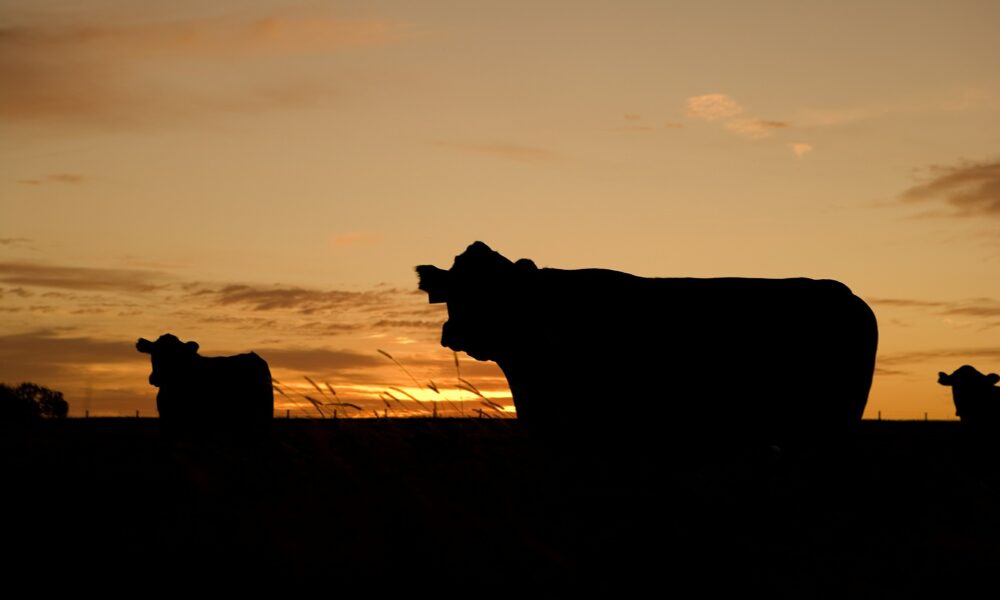75 years of real beef

The Snapshot
- The Australian beef herd has shown relatively steady growth since 1945, apart from the 1970s period boom and crash.
- While we are at record cattle prices in nominal terms, we can see that, once deflated to current day values there were times when cattle prices were higher.
- Current annual average prices are sitting at the 80th percentile, although on a monthly basis they are at the 87th percentile.
The Detail
On December 3rd 1945 the Australian Broadcasting Corporation (ABC) launched it’s Country Hour program, which has become an invaluable mainstay of regional and rural life. This week the ABC Rural Country Hour turns 75 years old, and in celebration of this milestone birthday the EP3 team had a chat with ABC’s Warwick Long about the Australian beef herd since 1945.
At the end of the Second World War the Australian beef herd was at 14.1 million head, growing at at average rate of 1.2% per annum until the late 1960s. A fifteen year beef export agreement between Australia and the UK (signed after the war) had seen offshore demand increasing for Aussie beef. Rising beef prices through the 1950s and 1960s attracted supply and the growing export sector helped push the Australian herd to record heights, topping out at 33.4 million head in 1976.
Australian beef exports as a proportion of production had grown from 17% during the 1950s to 33% in the 1970’s. A far cry from the 70-75% of Australian beef produced that is exported nowadays. However, in 1973 the combination of the UK joining the European Union and the global oil price shock saw economic growth and demand for beef take a tumble.
Australian beef prices crashed as there were no markets to send product. Exacerbated by extreme drought in the early 1980s the herd contracted to 21.8 million head by 1988. From 1989 to 2013 the herd once again averaged annual growth rates of around 1.2% per annum, reaching 29.3 million head by 2013. In recent years successive droughts in 2014/15 and 2018/19 have seen the herd contract to near three decade lows.
The lower herd and tighter beef supply seen in the last few seasons has encouraged record prices to return to Australian cattle markets, at least on a nominal price basis. Adjusting annual average prices from the 1950s to current dollar values we can see that in real terms Australian cattle prices are at the upper end of the “normal range”, as identified by the grey shaded 70% range band.
Based on the 2020 annual average price of 330c/kg lwt for a 400 kg live weight medium steer the price per head is around the $1,320 level. Historically, in real terms, this price has fluctuated between $800 and $1,380 for 70% of the time since the early 1950s and has set a long term average of $1,090 per head. Prices below $500 or above $1,680 per head would be considered extreme (beyond the 95% boundary) for this type of steer as they have occurred less than 5% of the time over the last seven decades.
During the 1970s boom the price for a 400kg live weight medium steer reached a peak of $1,954 (in 2020 dollar value terms) falling sharply to $557 by 1975 and the end of the beef market crash. A hair raising time to be trading beef cattle.
Another way to assess the current price of Aussie cattle compared to historic levels is via a percentile ranking of the annual average price, after all prices have been converted to 2020 dollar values. The percentile ranking chart shows how volatile the mid 1970s were with prices moving from the highest they had ever been in real terms (100th percentile in 1973) to the lowest they had ever been (zero percentile in 1975) then back to the 96th percentile in 1979.
Currently prices are sitting at the 80th percentile on an annual average basis. Although, recent price gains over the last few months have the monthly price percentile in real terms at the 87th percentile. The highest they have been in deflated terms since 1980.



